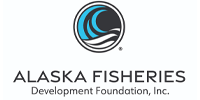Summary
According to the Alaska Department of Natural Resources (ADNR), as of May 2021, there are 402.38 authorized and leased acres for seaweed production, and 1,579.49 acres under review in Alaska waters (ADNR Report, 2021). The authorized space alone has the potential to grow over 5,100 metric tons of sugar kelp. If all of the leases under review were approved and farms were growing at maximum capacity, there could be as much as 20,000 metric tons of sugar kelp grown in Alaska, not including the potential to add vastly more lease sites. Despite this potential, only 104 metric tons were sold in 2020 (ADFG, 2021).
There is state and federal support for developing Alaska mariculture industries, which could help increase sales of Alaska seaweed, and increase the capacity and capability of new and existing companies involved in purchasing and processing. This guide was developed to help individuals and companies better understand what’s involved as they decide whether to enter the seaweed processing industry, and to provide some industry standards in the manufacturing or processing of kelp.



